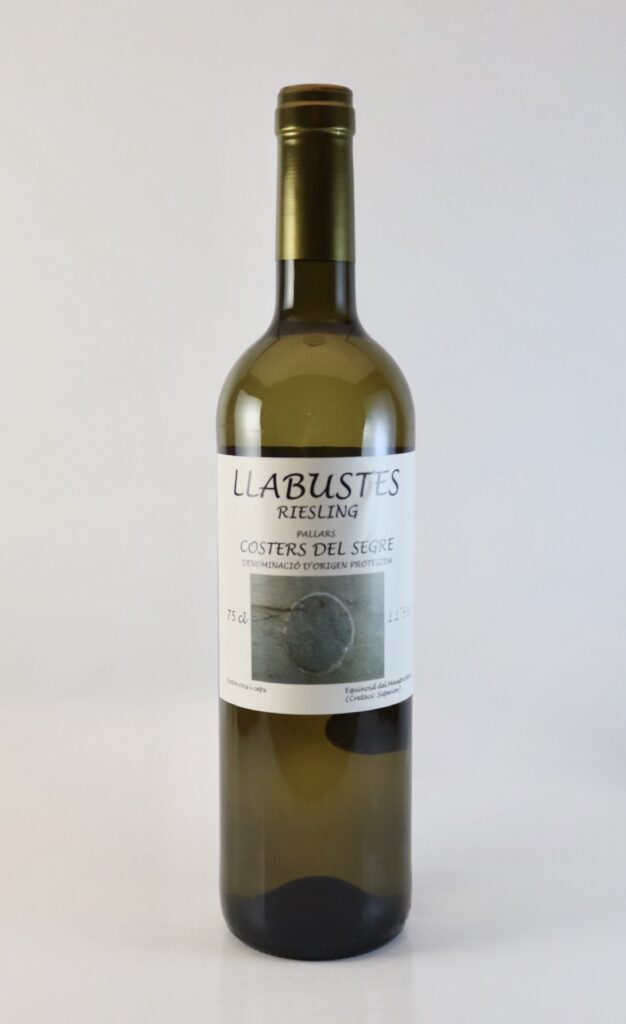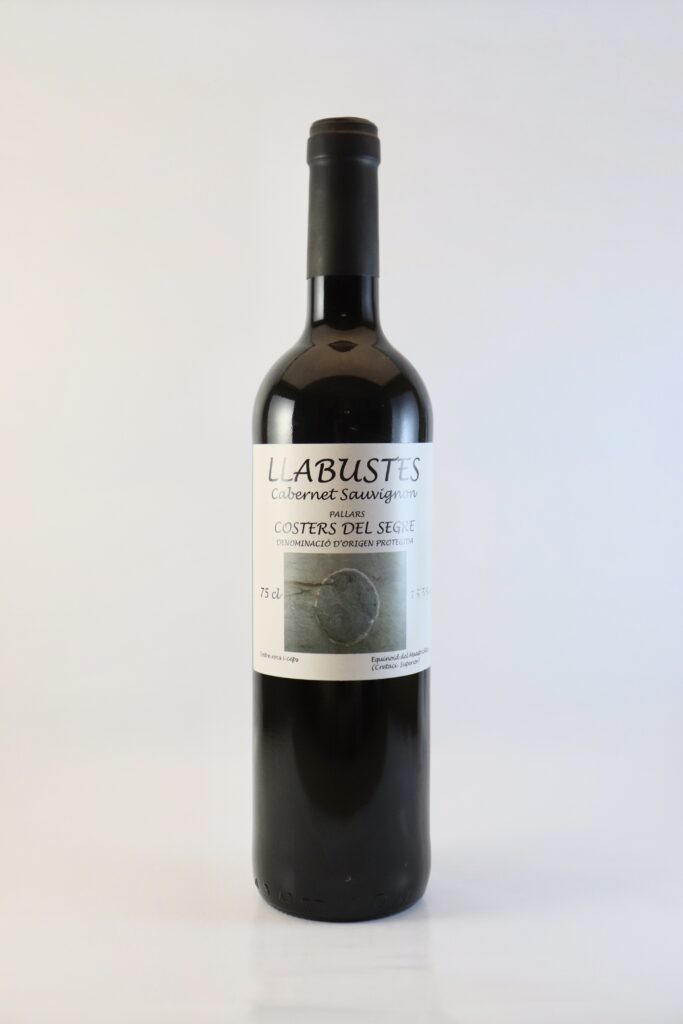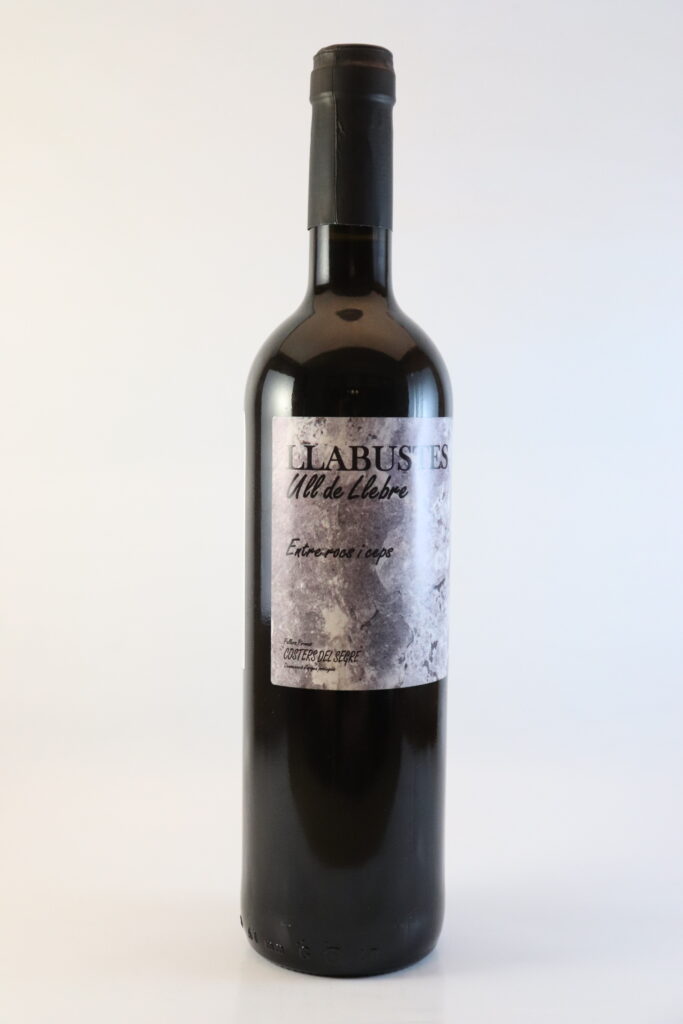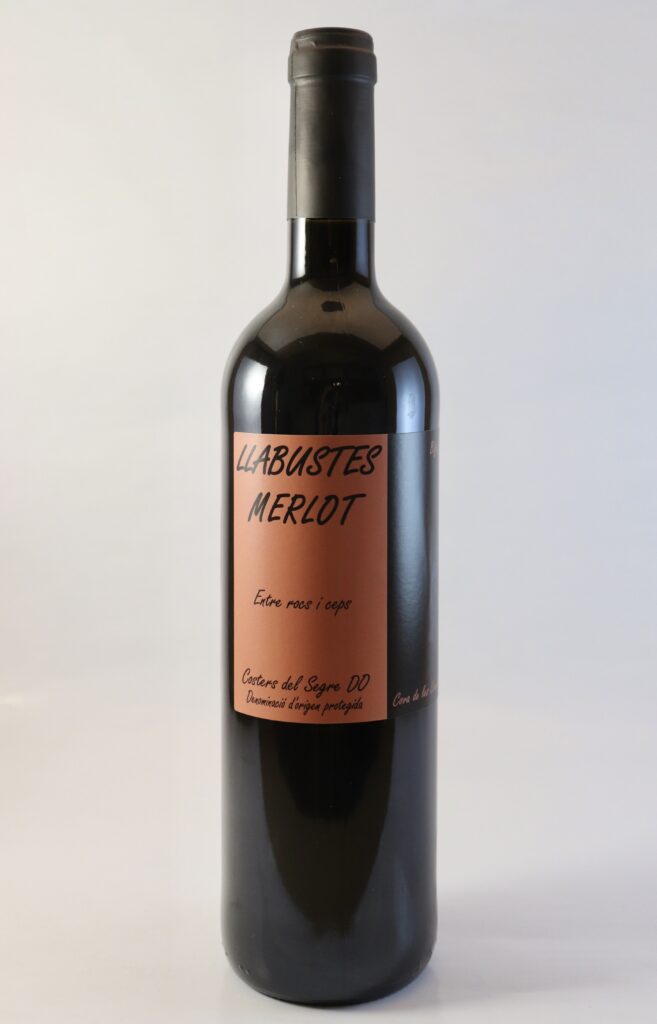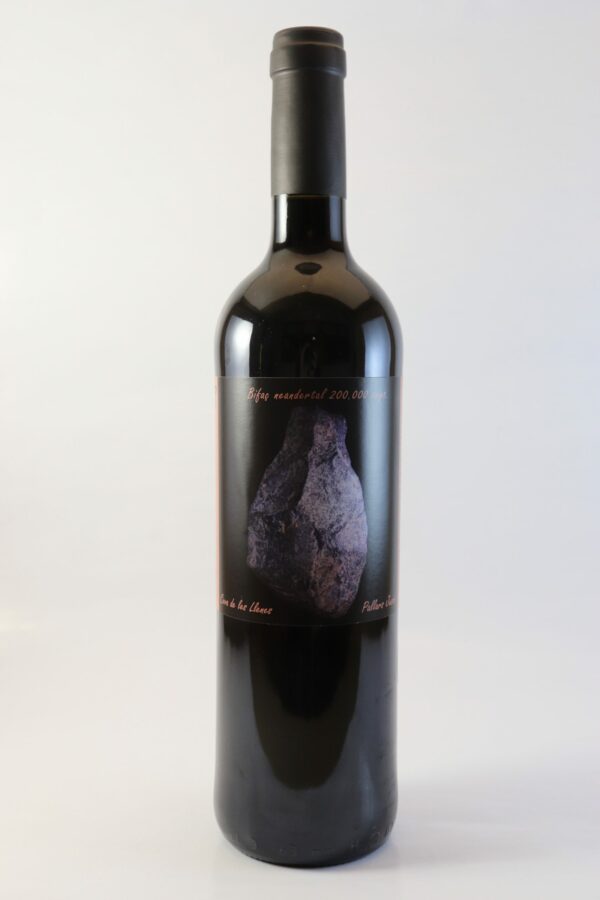The Vila Corona Winery expresses on its labels the geological, paleontological, archaeological and mythological richness of its environment.
Our motto “Between stones and vines” which is present on all our labels, highlights the geological importance of the land (terroir) where our vines grow.
65 million years ago, the Sierra del Nerets was the ancient river delta that emptied into the Sea of Tethys, which linked the Indian Ocean with the Atlantic Ocean. This sandy area, created by water currents, is now a rock: the Areny Sandstone. The last dinosaurs in Europe lived in this place.
Later, 40 million years ago, the Pyrenees were formed. They arose as a result of the movement of the African plate, which pushed the Hispanic plate into the European plate, forming a mountain range of 8000 meters on average, inclined towards the south. This steep incline forced tonnes of rocks to fill the valley where Catalonia now lies, over a process of rainfall and erosion which occurred over millions of years.
In Pallars and other places in the Pyrenees we find the Tremp formation, or Garumnia, the result of the aforementioned formation of the Pyrenees, which is identified mainly by a distinctive red clay, with a lot of iron, which gives it the reddish garnet or dark pink colour, which characterizes many lands of the Pallars. It is only in Pallars where vine cultivation is found in these reddish lands of the Garumnia, constituting a specific and unique terroir for our vines.
The Neret rock has been crumbuling and eroding for thousands of years and has been the land where our ancestors have cultivated the vineyard since 1749. Originally the small winery of the Vilamitjana house produced an insignificant amount of wine, however the father of the current owner developed the enological standards of the establishment into a robust operation and has always been marketed as Conca de Tremp wine. It was in the twentieth century when the cultivation and commercialisation of wine was perfected, first in barrels and casks, and later in the bottle, until today when, under the direction and expertise of the enologist Enric Vila Corona, it reached the goal of being the first Pallars winery that entered the Costers del Segre Designation of Origin, specializing in monovarietals and preserving the blend of Pallars autochthonous varieties.
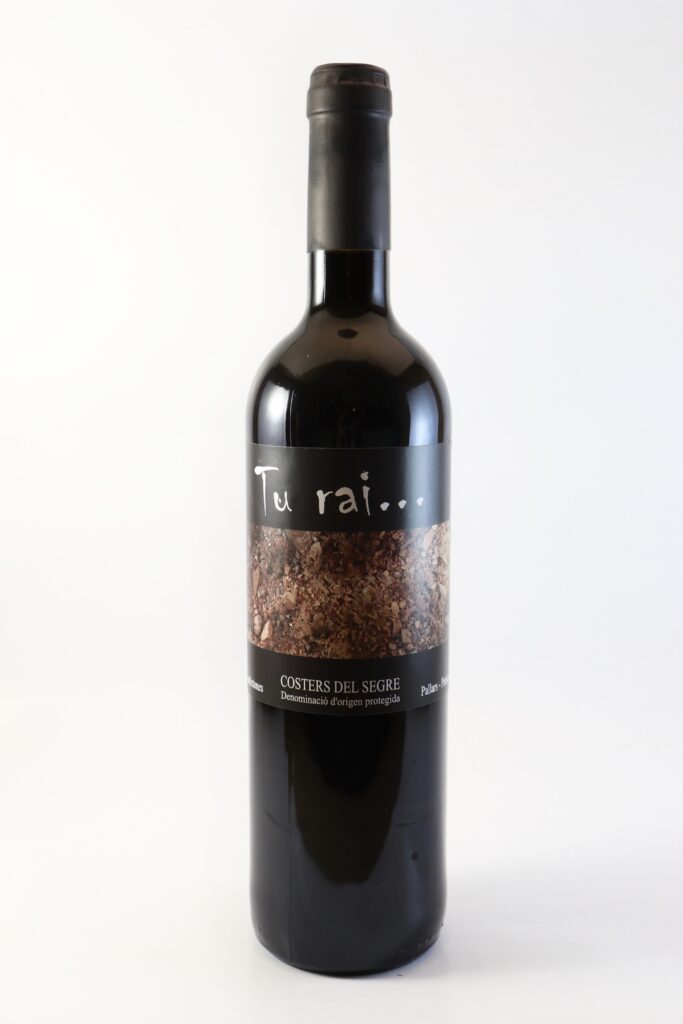
It is on the Tu Rai… label where you can see the erosion in the Neret rock, which provides a wealth of silicates, mica, quartz, quartzites, potassium feldspar, lime and other minerals that, when crumbled together with the reddish soil of Garumnia, creates the substrate of the vineyard. Tu Rai… is our red wine coupage of the autochthonous varieties of Pallars (Morastell, Tempranillo and Garnacha), the purpose of which is to commemorate the wine that our ancestors made. In this way, we seek to maintain the essence of the wine that was made with the red varieties of grapes that were on the farm where the whole family participated in harvesting and vinifying. We want to preserve the flavour of the wine that was present in jugs and kegs of all the houses in Pallars. In fact, ours is the only winery who preserves this blend of black grapes with the autochthonous varieties of Pallars.
The monovarietal wines that we vinify and bottle under the Llabustes brand pays homage to, and at the same time preserves, the toponymy of the old medieval town of Llabustes, located in the Range of the Nerets, between the town of Vilamitjana and Suterranya, where we have one of our estates.
While walking through the ravine under the old town of Llabustes, we found a fossil that was analyzed by geologists and paleontologists who study this area of the Neret and determined that it belonged to an echinoid from the Upper Cretaceous. This paleontological finding is part of the label for the white wine, Llabustes Riesling and the red wine, Llabustes Cabernet Sauvignon.
*Natural Heritage – EDM of Vilamitjana*
Geology and mythology are both on the Llabustes Tempranillo red wine label where we see a silhouette of the Neret rock that recalls a large human footprint. In this way we highlight the mythological place of the “Batzop footprint”, which is known through the popular tales of the area and detailed in the book Guide to the mythical and legendary places of Pallars Jussà (Pep Coll).
*Mythology, legends and geology, A Tremp. Cartographic Institute *
This approach to popular culture and geology is reflected in an eno-literary outing, walking up to Batzop’s footprint, hearing stories and finally tasting a glass of Llabustes Tempranillo red wine in the winery. This is one of the activities organized by the Libraries with DO, where the Vila Corona Winery participates and it’s organized by the Maria Barbal library.
*Letters and wines – Maria Barbal Public Library *
*Legendary of the Batzop Footsep *
A relevant finding in the study of the archaeological wealth of Pallars has been the presence of lithic industry during the excavation of the Cova de les Llenes (Pallars Jussà). Researchers from the Catalan Institute of Human Paleoecology and Social Evolution (IPHES) and the Rovira i Virgili University (URV), wanted to thank us for our interest in bringing the cultural richness of Pallars closer through our labels, and presented us with a photograph of the Neanderthal biface they found and that allowed them to study the behavior and relationships of Neanderthal communities in this mid and high mountain area, during the Pleistocene, 200.000 years ago.
It is for this reason that we include the Neanderthal biface from the Cueva de las Llenes on the label of the red wine bottle Llabustes Merlot. A grape variety that has also crossed borders and that has adapted to our terroir with excellent results, as evidenced by the numerous international awards that our Llabustes Merlot has won, among others, the Gold medal in the World Merlot & Assemblies Contest in 2017.
*Mundial Du Merlot & Assemblages 2017*
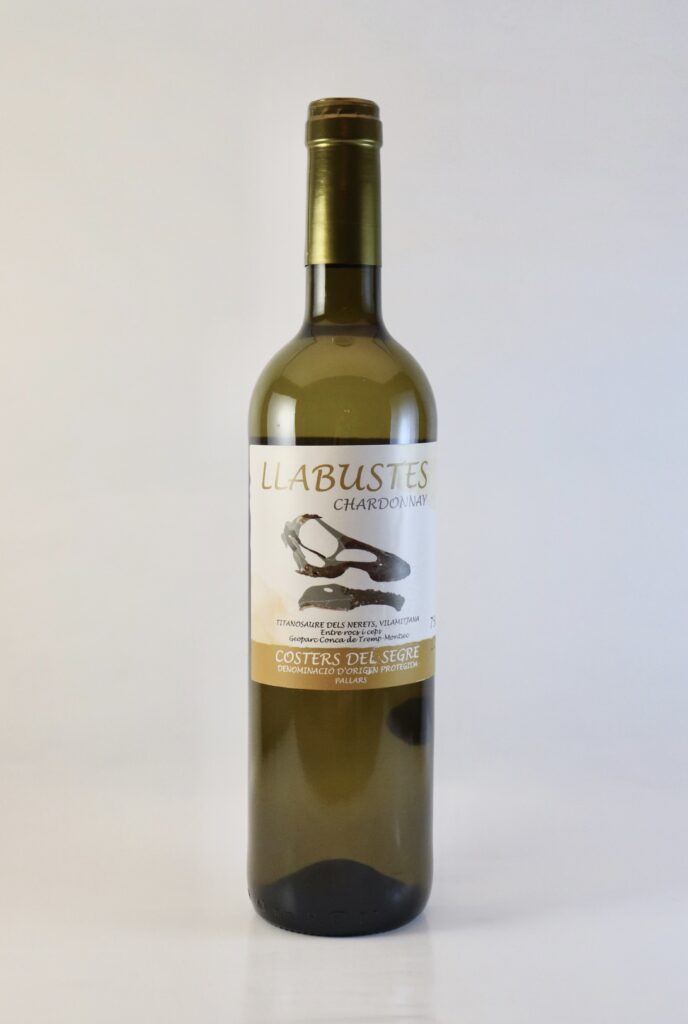
The last paleontological finding that we have incorporated into our labels in the bottle of white wine Llabustes Chardonnay has been made next to our vineyards, in the Neret site. For years, researchers of the Museo de la Conca Dellà and the Catalan Institute of Paleontology have been working on this site where, in the course of recent campaigns, they found remains belonging to a head of a titanosaur, a long-necked herbivorous dinosaur. This fossil is still under study, so the researchers provided us with a reconstruction of the skull made by digital means to be able to incorporate it into one of the labels. Judging by the dimensions of the head, paleontologists estimate that the Nerets titanosaur could have reached about 15 meters in length, 3 meters in height and a weight of approximately 10 tons.
*Upper Cretaceous Paleontological excavation at theNerets site*
We appreciate the work carried out by all these researchers and writers who allow us to better understand our environment and our evolution. They are a source of cultural wealth for all those who are interested in the territory (terroir) and the wine that results from the work of the land and the knowledge that has been transmitted from generation to generation. It is this that the Vila Corona Winery wants to offer in every glass of wine.
